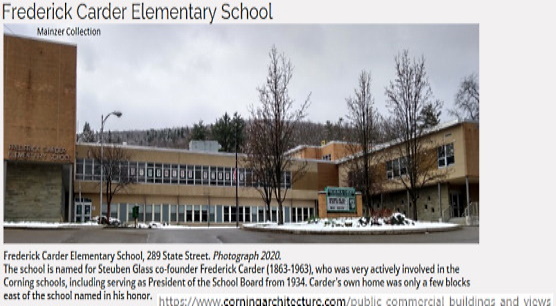Painted Post History
Painted Post is a village in Steuben County, New York, United States. The village is in the town of Erwin, west of the city of Corning. The name comes from a Seneca carved post found by explorers at the junction of three local rivers. Corning-Painted Post Airport is west of the village. The former Town of Painted Post in 1836 was renamed the Town of Corning.The Senecas never had a painted post but rather the post that existed in the Painted Post area was not "painted". This was a central crossing of the principle Indian trails as well as a resting place and rendezvous for Indians traveling north, south, east and west. Indian houses were located near the river, fields were cultivated and a huge post was set in an open space and said to be representing an enemy. Festivities and dances were held around this post and huge fires were built. n the form of a monument with a sculptured statue of Chief Montour, a Seneca Indian chieftain, who reportedly was victorious in a battle in this area. The plain post had been used as a type of bulletin board and when the white settlers moved into the area they painted it. To paint this post was desecration to the Seneca people. The Seneca language word for the area was TKäen DōD, meaning "Land of the post". The post was there until 1801 or 1802, then replaced with a new one. The old post was taken to the tavern of Captain Samuel Erwin where the post was eventually destroyed by souvenir hunters. In 1949 the citizens of Painted Post voted to replace the deposed Indian chieftain. Norman Phelps, art teacher at Painted Post High School, was chosen to sculpt the Indian and the dedication of the present Chief Montour monument, that you see in the Village Square complex, took place in May of 1950.
In 1793 the town was organized and named Painted Post. This town was made up of the Towns Hornby, Campbell, Erwin, Lindley, Corning and Caton. After a time each town was separated from Painted Post and organized as a separate political entity with an individual name.
Painted Post was established as a village in 1803. The Erwin brothers are considered the first wealthy European descended settlers to have settled in the Painted Post area in the late 18th century (Painted Post village is in the town of Erwin, named for the brothers and incorporated in 1796). The brothers' 4 mansions are still standing. Painted Post. The village was first incorporated in 1860 and officially re-incorporated in 1893. Painted Post is featured in the Stephen Vincent Benet poem "American Names."
In about 1798-1800 it was discovered that the streams were navigable at certain times of the year and this led to the manufacturing and marketing of lumber, agricultural products, new grist mills, etc. The Chemung Canal came into being in 1829. Products were then shipped from Corning to Elmira via the Feeder Canal and hence to Seneca Lake via the Chemung Canal.
1848 - 1849 The first schoolhouse was built by Arthur H. Erwin and rented to the district for $100 per year. This was located on the south side of the river. 1868 - The present brick schoolhouse built on Charles Street for $14,000 including lot and furniture. 1850 - Methodist Church Society erected an edifice on the corner of Chemung and Steuben Streets. Sept. 1850 - Lodge of F & A Masons instituted in Village. 1852 - Corning, Painted Post, Coopers Plains and Monterey Plank Road Company was formed. A track was laid from the Village of Monterey to Coopers Plains, then to bridge over the Conhocton River at Corning - about 15 miles with four toll gates. Six years later the plank road was abandoned between Coopers Plains and Monterey. Later a "Jordan" road from Corning through Painted Post to Coopers Plains was built. 1861 - Town and Village furnished soldiers to put down the memorable Southern secession and rebellion. 1860 - 1863 Again, much growth in the Town and Village. Soil was a deposit of rich alluvium adapted to grow cereals, roots, choice fruits, dairy farming, stock, wool growing. Lumbering began to dwindle. 1872 Hamilton Street and Erie Railway crossing on the south- side of Water Street including the Empire block was burned. Nearly all the buildings were replaced with better buildings.
1850 - The New York and Erie Railroad was completed between Corning and Hornellsville, passing through the village. In 1852, the Buffalo, Conhocton Valley and New York railroad formed a junction in this village with the Erie. 1855 - The Union Telegraph Company completed a line along the E. R.R. and through the village; and in 1857 another telegraph line was made along the B.C.V. and N.Y.R.R.. This transportation and communication system really advanced the growth of the Town and Village.
1896 - Weston Engine Works started in Painted Post followed by The Rand Drill Company making Weston's steam engines and a specialty air compressor. Later called the Imperial Engine Company and the Ingersoll Rock Drill Company joined forces to form the Ingersoll-Sergeant Drill Company in 1897. 1905 - The Rand Drill Company and Ingersoll-Sergeant Drill Company merged and formed Ingersoll Rand. Ingersoll Rand Company was a great contributor to the economy and growth of Painted Post and the Town of Erwin, and played a very important part in our national defense and war effort during World War II. They manufactured all sizes of air compressors, gas engines, and related machinery. Ingersoll Rand is a world- wide company. 1987 - Ingersoll Rand moved from Painted Post and Dresser Rand came in and now manufactures gas engines and reciprocating compressors for the gas and oil industry. Dresser Rand and Dresser Industries. This is the primary industry in Painted Post.
After the 1972 Agnes Flood which devastated much of the Town of Erwin and the Village of Painted Post, the area was rebuilt and has grown to be a very prosperous and progressive community. New businesses are encouraged and are guided by our Community Development group and our local government.
Sources:
Wikipedia.org [Painted Post History]
ErwinNY.org [Painted Post History]
Highlighted Sites of Interest:
Facebook: Painted Post and Erwin Museum At the Depot
Living History Education Website The Corning Painted Post Historical Society (CPPHS) was founded in 1947 "to collect local historical data, to diffuse the knowledge of local history, and to promote... the (1948) centenary of the incorporation of Corning as a village." It began immediately collecting information about the community's past.
In 1976, the Society acquired and restored as a Bicentennial project the dilapidated 1796 structure once known as the Painted Post Tavern. Located at 73 West Pulteney Street, Corning, it oversees today the Heritage Village of the Southern Finger Lakes which include the Benjamin Patterson Inn and other buildings moved to the site for restoration as the museum grew.
Source: Corning-Painted Post Historical Society [Painted Post History]
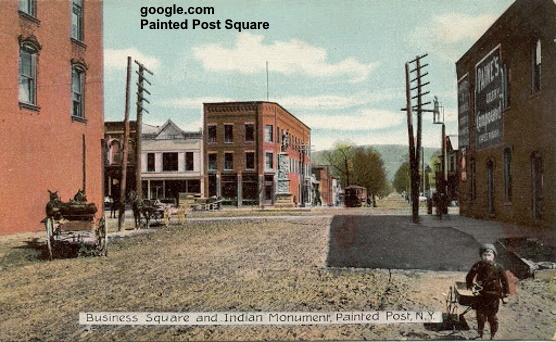
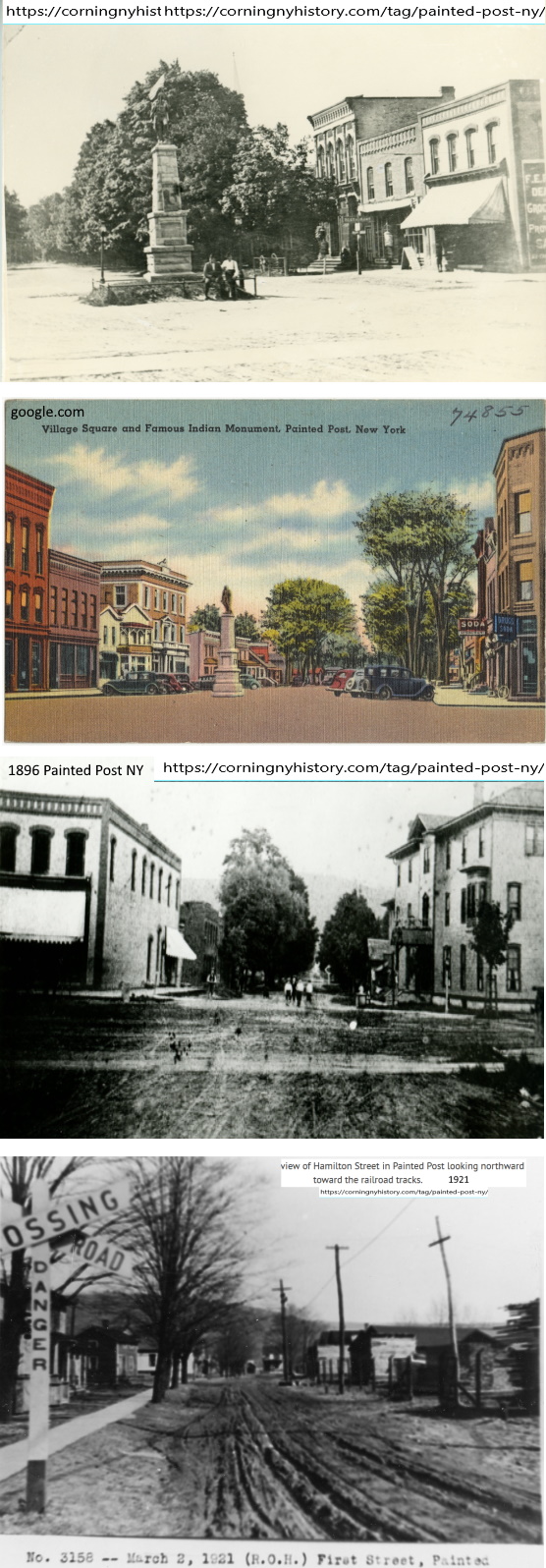
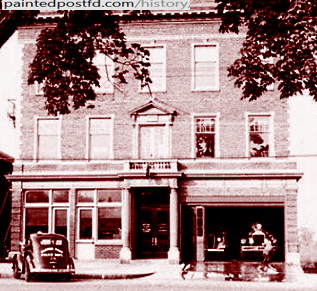
Painted Post School History
In 2014 Public schools located in Painted Post include Corning-Painted Post Middle School, Calvin U. Smith, Erwin Valley, and Frederick Carder. High School students from the are go to Corning-Painted Post High School in Corning, NY since 2014. Source:Wikipedia.org [Painted Post History]
Heritage Villages Website [School History]
Corning-Painted Post West High School and then Middle School
- In 1963, Northside, CFA, and Painted Post High Schools combined into either EHS or WHS High Schools grades 9-12 while Painted Post, CFA, and Northside became Middle Schools grades 6-8
- 1963-2014, West HS had 9-12 grades
- In 2014, West HS became a Middle School of 6-8 grades
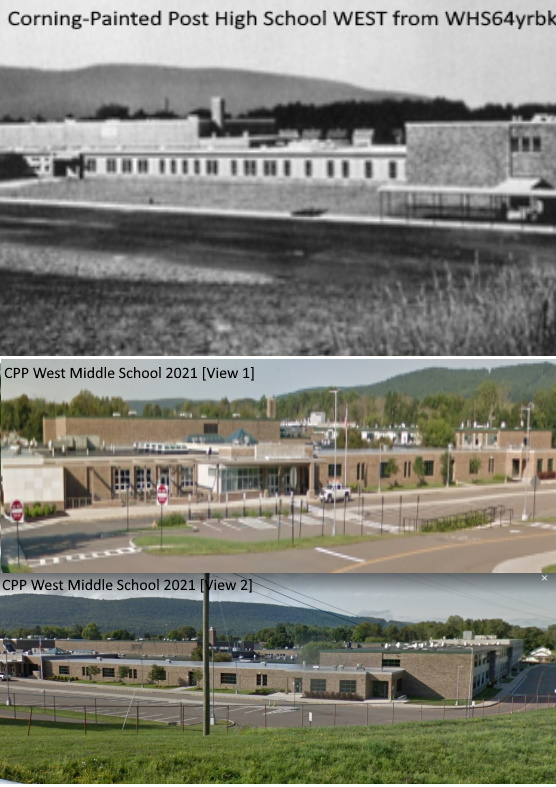
Calvin U. Smith Elementary School
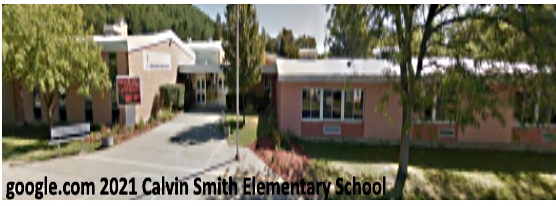
Erwin Valley Elementary School

Frederick Carder Elementary School
